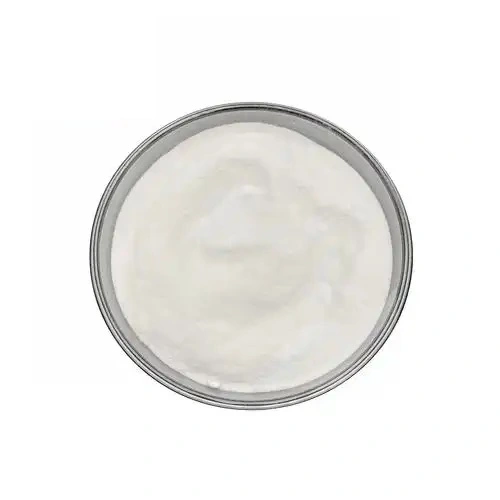Is pure mupirocin powder safe?
Mupirocin powder, a topical antibiotic derived from Pseudomonas fluorescens, has gained significant attention in the medical community for its effectiveness against various bacterial skin infections. However, questions about its safety and proper usage often arise. This comprehensive guide delves into the safety aspects, uses, and handling guidelines for pure mupirocin powder, providing you with essential information to make informed decisions about its use.
What to Know Before Using Pure Mupirocin Powder?
Before incorporating pure mupirocin powder into your treatment regimen, it's crucial to understand its nature and potential effects. Mupirocin is a potent antibiotic that specifically targets gram-positive bacteria, including Staphylococcus aureus and Streptococcus pyogenes. These microorganisms are often responsible for skin and soft tissue infections.
The safety profile of mupirocin powder is generally favorable when used as directed. However, like any medication, it comes with potential risks and side effects. Some individuals may experience mild skin irritation, burning, stinging, or itching at the application site. In rare cases, more severe reactions such as allergic responses or systemic effects may occur.
It's imperative to consult with a healthcare professional before using pure mupirocin powder. They can assess your specific condition and determine if this treatment is appropriate for you. Factors such as your medical history, current medications, and the nature of your infection will be taken into account to ensure safe and effective use.
Pregnant or breastfeeding individuals should exercise caution and seek medical advice before using mupirocin powder. While studies have not shown significant risks to the fetus or infant, the potential effects have not been extensively researched.
Common Uses and Benefits of Mupirocin Powder

Mupirocin powder boasts a wide range of applications in treating bacterial skin infections. Its efficacy in combating various conditions has made it a valuable tool in both clinical and home settings. Let's explore some of the primary uses and benefits of this versatile antibiotic:
Treatment of Impetigo
Impetigo, a highly contagious bacterial skin infection common in children, responds well to mupirocin treatment. The powder form can be particularly effective in reaching affected areas and providing targeted therapy.
Management of Folliculitis
Folliculitis, an inflammation of hair follicles often caused by bacterial infection, can be effectively treated with mupirocin powder. Its ability to penetrate the follicles makes it an excellent choice for this condition.
Control of Methicillin-Resistant Staphylococcus Aureus (MRSA)
Mupirocin and pure mupirocin powder have shown remarkable effectiveness against MRSA, a type of staph bacteria resistant to many common antibiotics. Its use in controlling MRSA colonization, particularly in healthcare settings, has been well-documented.
Prevention of Surgical Site Infections
Applied preoperatively, mupirocin powder can significantly reduce the risk of surgical site infections, particularly those caused by Staphylococcus aureus.
Treatment of Minor Cuts and Abrasions
For minor wounds prone to bacterial infection, mupirocin powder can serve as an effective preventive measure, promoting faster healing and reducing the risk of complications.
The benefits of mupirocin powder extend beyond its direct antimicrobial effects. Its targeted action helps minimize the development of antibiotic resistance, a growing concern in global healthcare. Moreover, the powder form allows for precise application and can be particularly useful in treating infections in difficult-to-reach areas.
Safety Guidelines for Handling Mupirocin Powder
While pure mupirocin powder is generally safe when used correctly, proper handling and application are crucial to maximize its benefits and minimize potential risks. Here are some essential safety guidelines to follow:
Proper Storage
Store mupirocin powder in a cool, dry place away from direct sunlight. Ensure the container is tightly sealed when not in use to prevent contamination and maintain potency.
Clean Application
Before applying the powder, thoroughly clean and dry the affected area. This ensures optimal absorption and reduces the risk of introducing additional bacteria.
Use of Protective Equipment
When handling pure mupirocin powder, wear gloves to prevent skin contact and a mask to avoid inhalation. This is particularly important if you're preparing the powder for application.
Avoid Contact with Eyes and Mucous Membranes
Mupirocin powder should not come into contact with eyes, nose, or mouth. If accidental contact occurs, rinse thoroughly with water.
Follow Prescribed Dosage
Adhere strictly to the dosage and application frequency recommended by your healthcare provider. Overuse can lead to antibiotic resistance and increased risk of side effects.
Monitor for Adverse Reactions
Be vigilant for any signs of allergic reactions or unusual symptoms. If you experience severe itching, swelling, or difficulty breathing, seek medical attention immediately.
Avoid Mixing with Other Substances
Unless specifically directed by a healthcare professional, do not mix mupirocin powder with other medications or substances. This could alter its effectiveness or cause unexpected reactions.
Proper Disposal
Dispose of unused or expired mupirocin powder according to local regulations. Do not flush it down the toilet or throw it in the trash without proper containment.
Conclusion
Pure mupirocin powder, when used correctly and under proper medical guidance, is a safe and effective treatment for various bacterial skin infections. Its targeted action against specific bacteria makes it a valuable asset in the medical arsenal, particularly in combating antibiotic-resistant strains. However, like any medication, it requires careful handling and adherence to safety guidelines to maximize its benefits and minimize potential risks.
For more information about mupirocin powder and other botanical extracts, please contact us at emily@jiubaiyuanbiotech.com. Our team of experts is always ready to assist you with any queries and provide you with high-quality products tailored to your needs.
References
1. Johnson, A. P., & Woodford, N. (2013). Mupirocin resistance in staphylococci: molecular basis and implications for prevention and treatment. Journal of Antimicrobial Chemotherapy, 68(12), 2761-2769.
2. Poovelikunnel, T., Gethin, G., & Humphreys, H. (2015). Mupirocin resistance: clinical implications and potential alternatives for the eradication of MRSA. Journal of Antimicrobial Chemotherapy, 70(10), 2681-2692.
3. Sutherland, R., Boon, R. J., Griffin, K. E., Masters, P. J., Slocombe, B., & White, A. R. (1985). Antibacterial activity of mupirocin (pseudomonic acid), a new antibiotic for topical use. Antimicrobial Agents and Chemotherapy, 27(4), 495-498.
4. Khoshnood, S., Heidary, M., Asadi, A., Soleimani, S., Motahar, M., Savari, M., ... & Goudarzi, M. (2019). A review on mechanism of action, resistance, synergism, and clinical implications of mupirocin against Staphylococcus aureus. Biomedicine & Pharmacotherapy, 109, 1809-1818.
Patel, J. B., Gorwitz, R. J., & Jernigan, J. A. (2009). Mupirocin resistance. Clinical Infectious Diseases, 49(6), 935-941.
